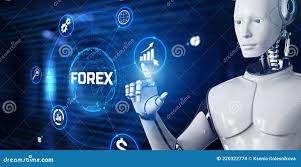
In the dynamic landscape of financial markets, technological advancements have ushered in a new era of trading automation. Among the myriad tools available to traders, Forex robots stand out as powerful instruments reshaping the way individuals engage in foreign exchange (Forex) trading. These automated systems, driven by algorithms and artificial forex robot, have garnered attention for their potential to streamline trading processes, enhance efficiency, and capitalize on market opportunities. As we delve into the realm of Forex robots, we unravel their intricacies, explore their benefits and challenges, and assess their impact on the trading landscape.
Understanding Forex Robots
Forex robots, also known as Expert Advisors (EAs) or algorithmic trading systems, are software programs designed to execute trades in the Forex market automatically. These robots operate based on predefined criteria and parameters, eliminating the need for manual intervention by traders. By analyzing market data, interpreting signals, and executing trades in real-time, Forex robots aim to capitalize on price fluctuations and generate profits.
The Mechanics Behind Forex Robots
At the core of Forex robots lies sophisticated algorithms meticulously crafted to navigate the complexities of currency markets. These algorithms incorporate various technical indicators, statistical models, and trading strategies to identify favorable trading opportunities. Whether employing trend-following strategies, mean reversion techniques, or advanced machine learning algorithms, Forex robots adapt to evolving market conditions with speed and precision.
Moreover, Forex robots can execute trades 24/7, leveraging the global nature of the Forex market. They operate without succumbing to emotions or biases, a common pitfall for human traders. This unyielding discipline allows Forex robots to adhere strictly to predefined trading rules, thereby mitigating the impact of impulsive decisions and psychological biases.
Benefits of Forex Robots
- Efficiency: Forex robots can analyze vast amounts of data and execute trades instantaneously, enabling traders to capitalize on fleeting market opportunities efficiently.
- Risk Management: By strictly adhering to predefined risk parameters, Forex robots help manage risk effectively, preventing emotional decision-making and overexposure to market fluctuations.
- Backtesting and Optimization: Traders can backtest Forex robots using historical data to evaluate their performance under various market conditions. This process enables optimization, fine-tuning, and validation of trading strategies before deploying them in live markets.
- Diversification: Forex robots allow traders to diversify their trading portfolios by deploying multiple strategies simultaneously across different currency pairs, timeframes, and market conditions.
Challenges and Considerations
While Forex robots offer numerous benefits, they are not without challenges and considerations:
- Over-Optimization: Excessive optimization of trading strategies based on historical data may lead to overfitting, where the robot performs well in backtests but fails to adapt to changing market conditions.
- Technical Failures: Technical glitches, connectivity issues, or software malfunctions can disrupt the operation of Forex robots, potentially leading to missed trading opportunities or unintended losses.
- Market Volatility: Extreme market conditions, such as sudden spikes or crashes, can pose challenges for Forex robots, as they may struggle to adapt swiftly or accurately to rapid changes in price action.
- Monitoring and Oversight: While Forex robots operate autonomously, regular monitoring and oversight are essential to ensure their continued performance, detect anomalies, and make necessary adjustments to trading parameters.
The Evolving Landscape
As technology continues to advance, the landscape of Forex trading and automation is poised for further evolution. The integration of artificial intelligence, machine learning, and big data analytics holds promise for enhancing the capabilities of Forex robots, enabling them to adapt dynamically to changing market dynamics and unforeseen events.
Moreover, regulatory bodies are increasingly scrutinizing the use of automated trading systems to ensure transparency, fairness, and market integrity. Striking a balance between innovation and regulation remains imperative to foster trust and confidence in automated trading technologies.
Conclusion
Forex robots represent a paradigm shift in the realm of Forex trading, offering traders a potent tool to automate and optimize their trading strategies. While they present numerous benefits, traders must approach their utilization with caution, recognizing the inherent challenges and complexities involved. With prudent risk management, continuous monitoring, and adherence to best practices, Forex robots have the potential to revolutionize trading, empowering individuals to navigate the Forex market with efficiency, precision, and confidence.